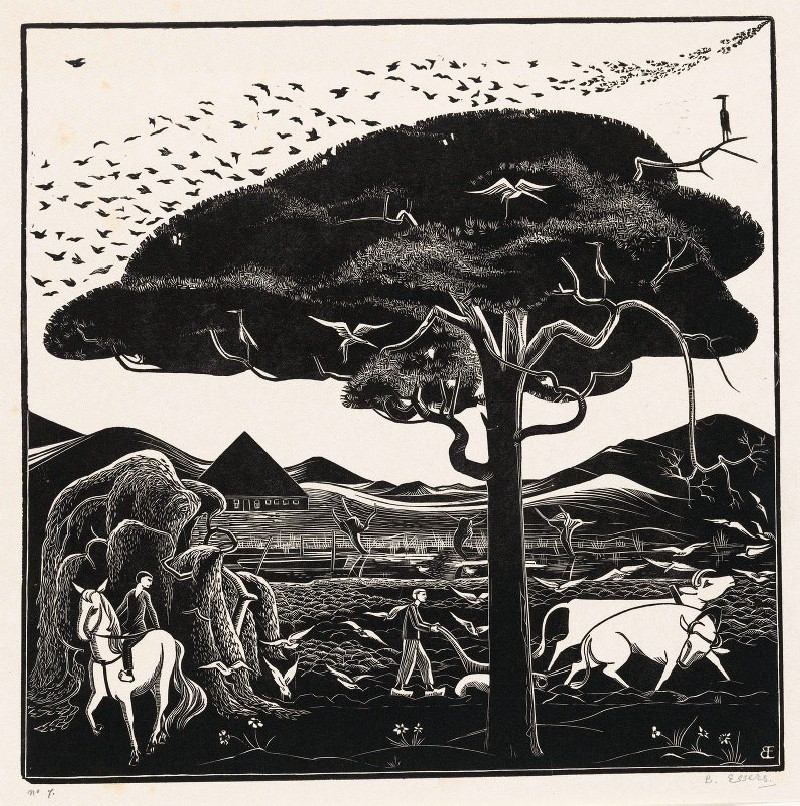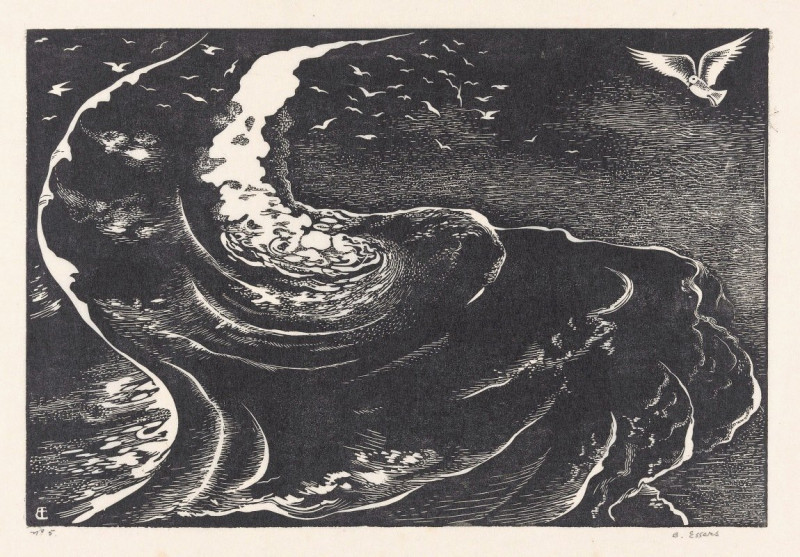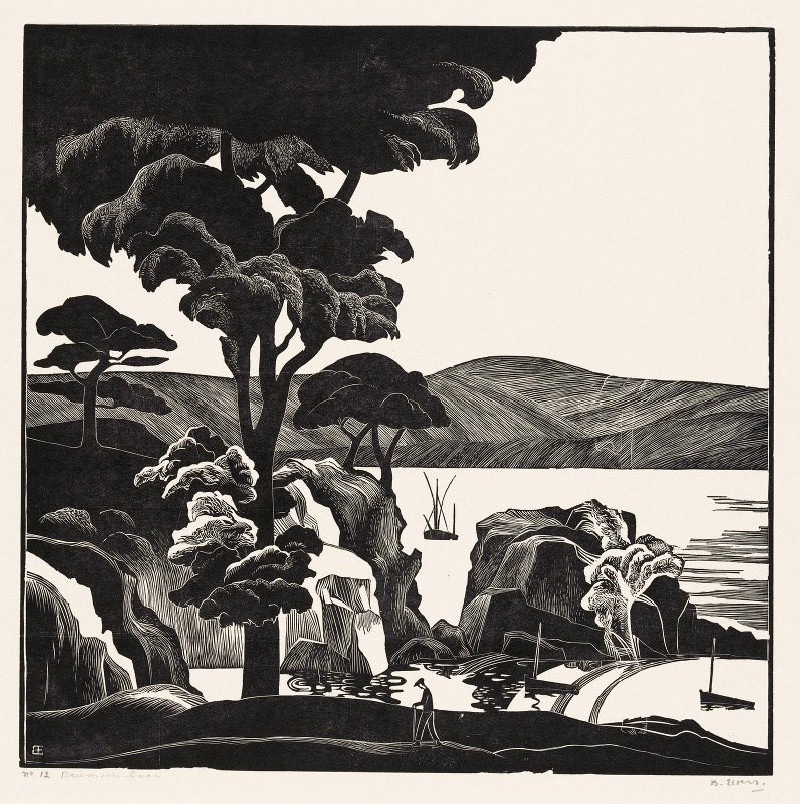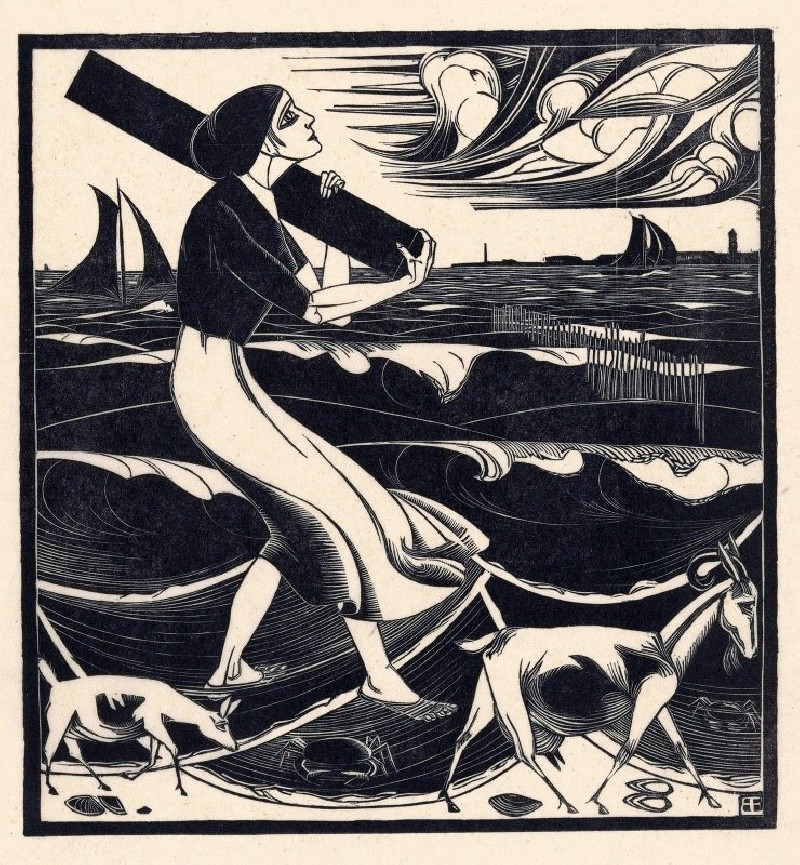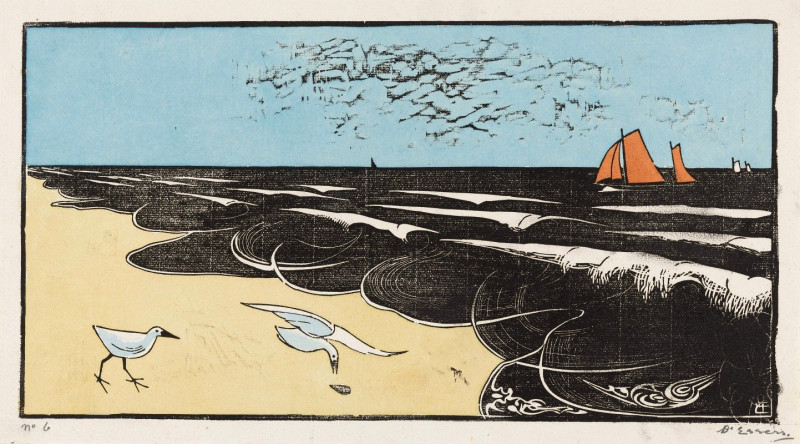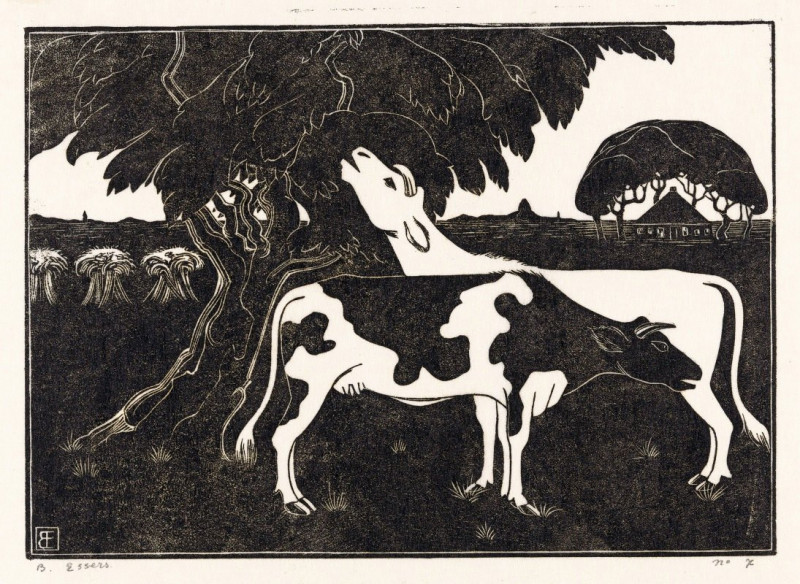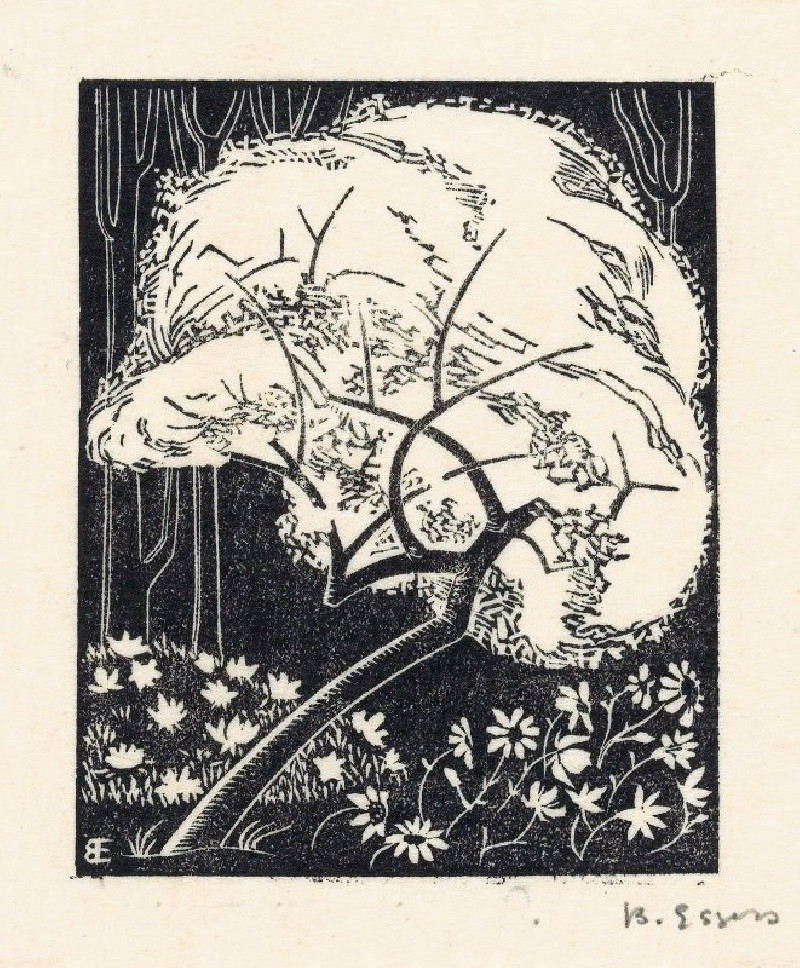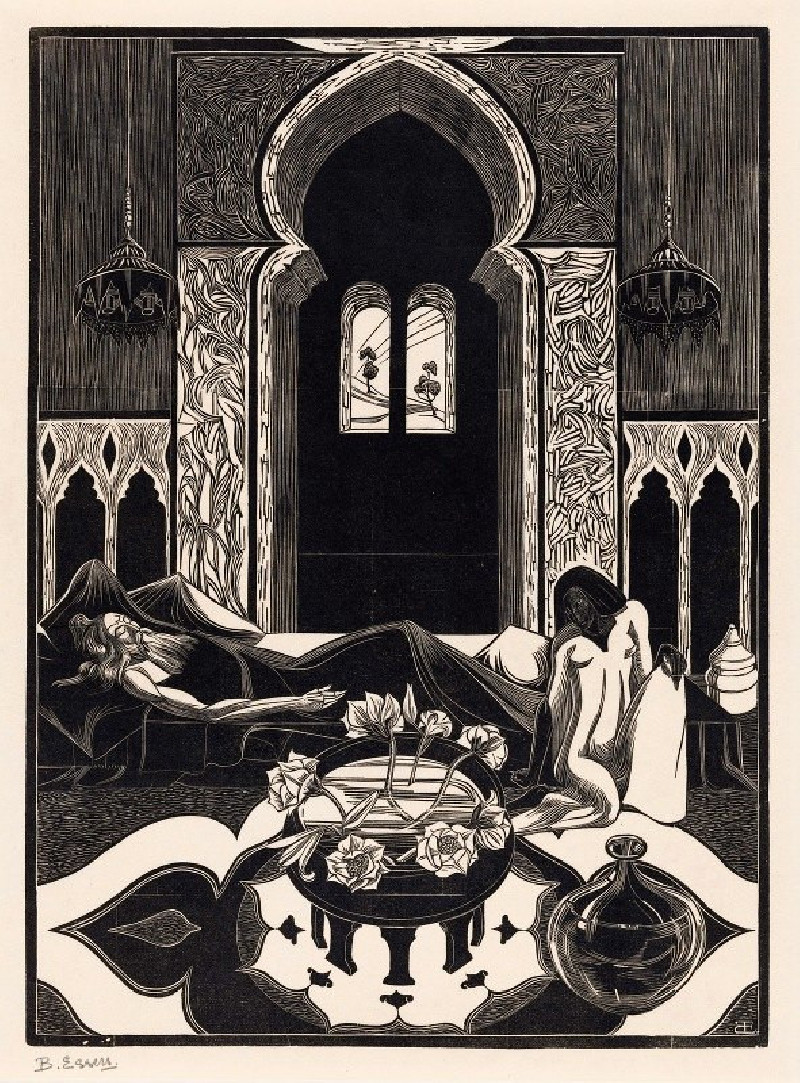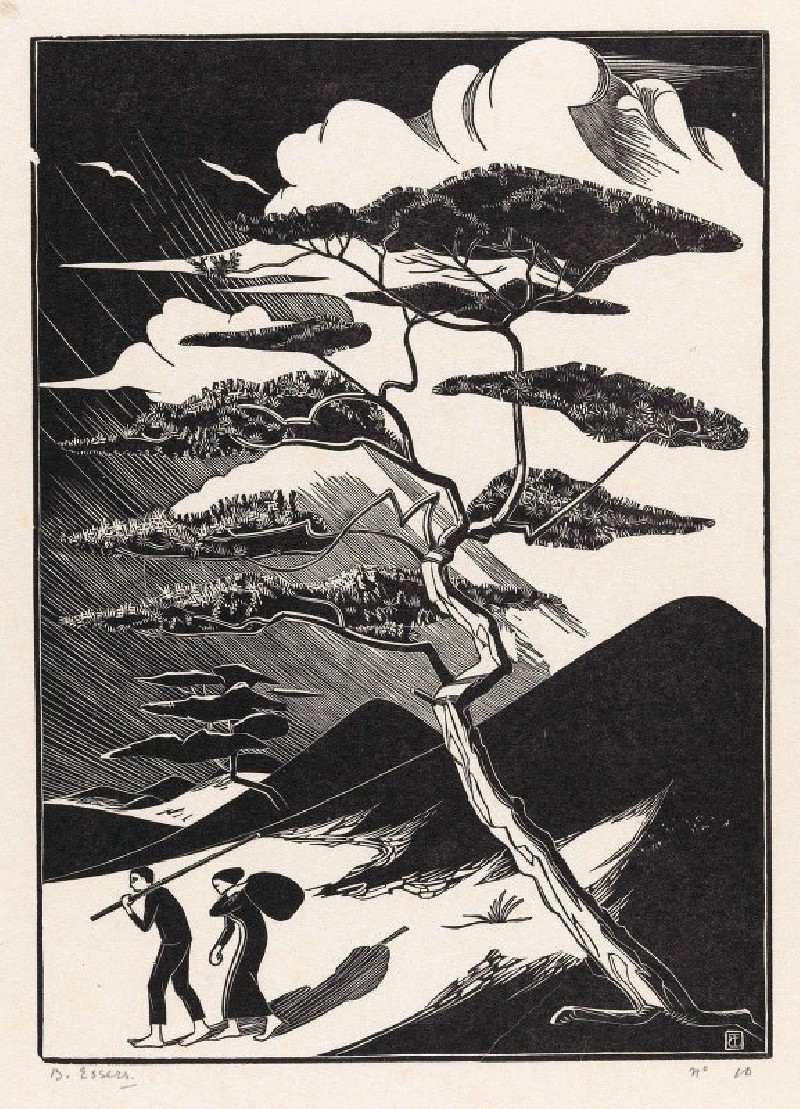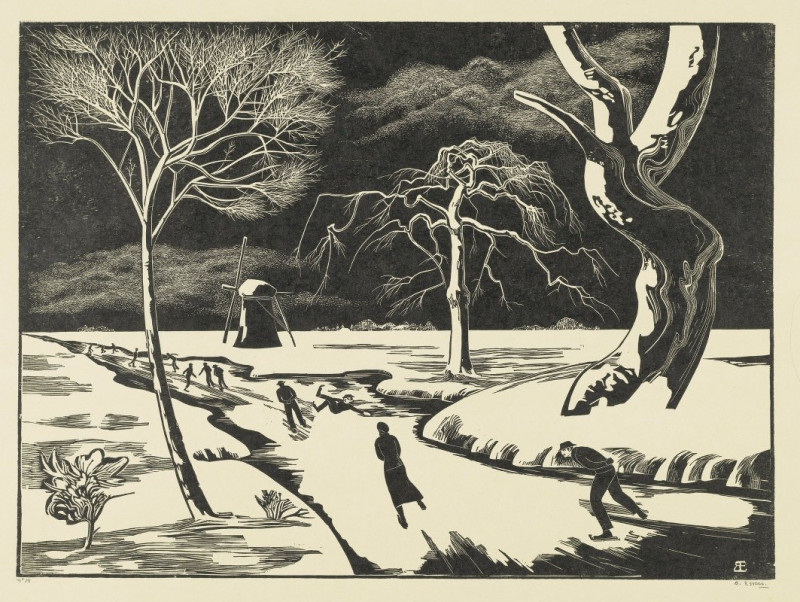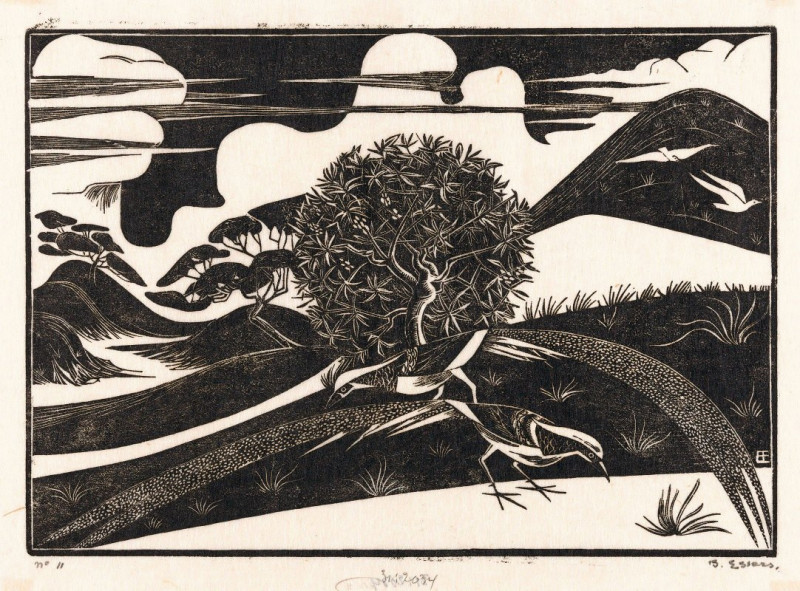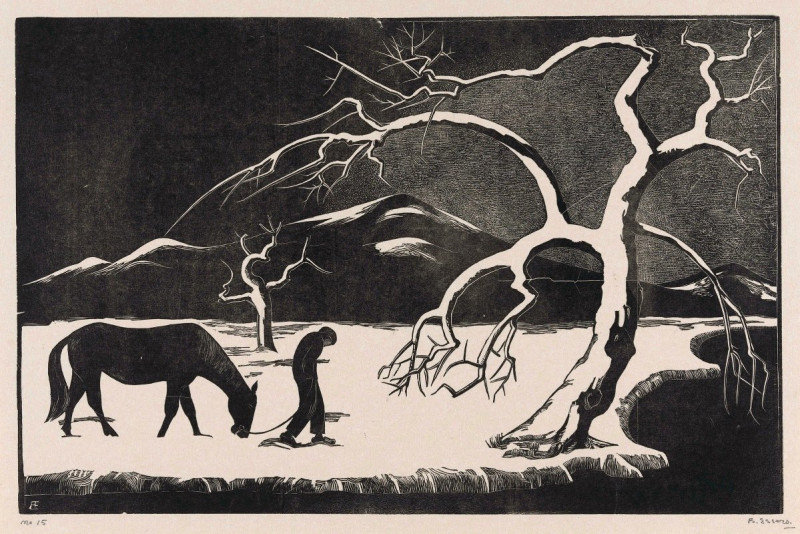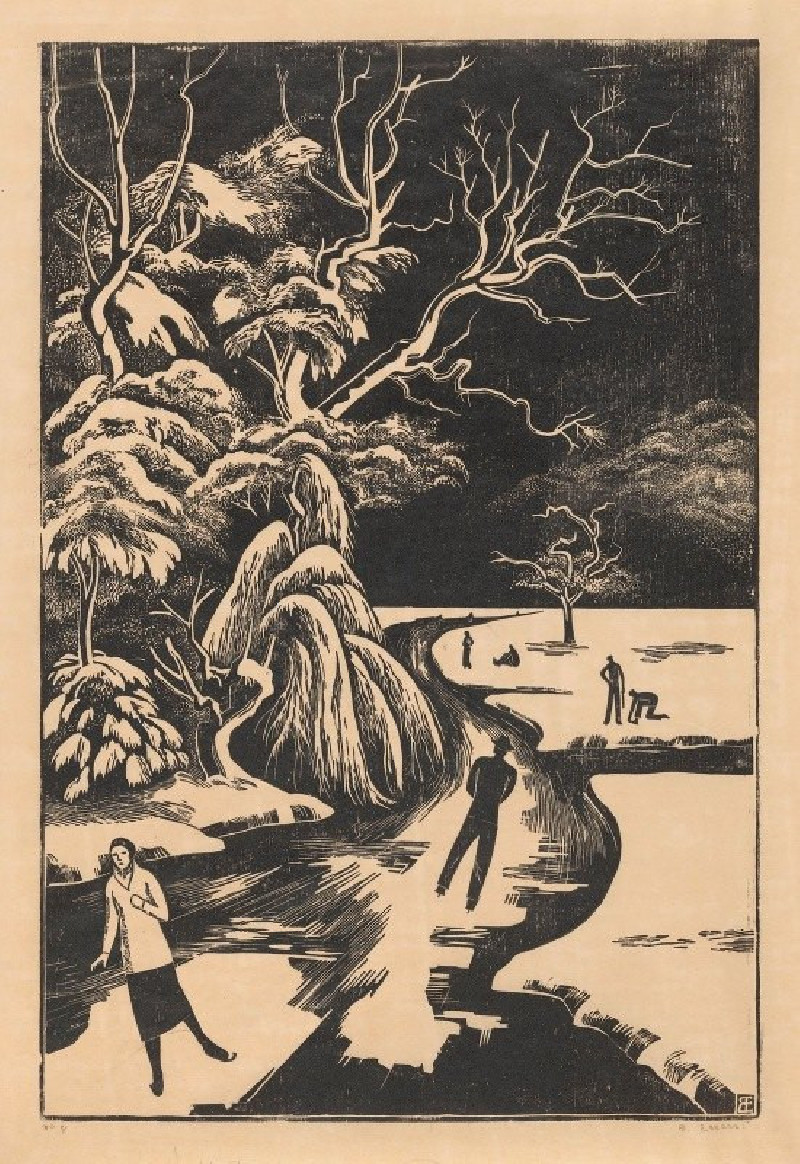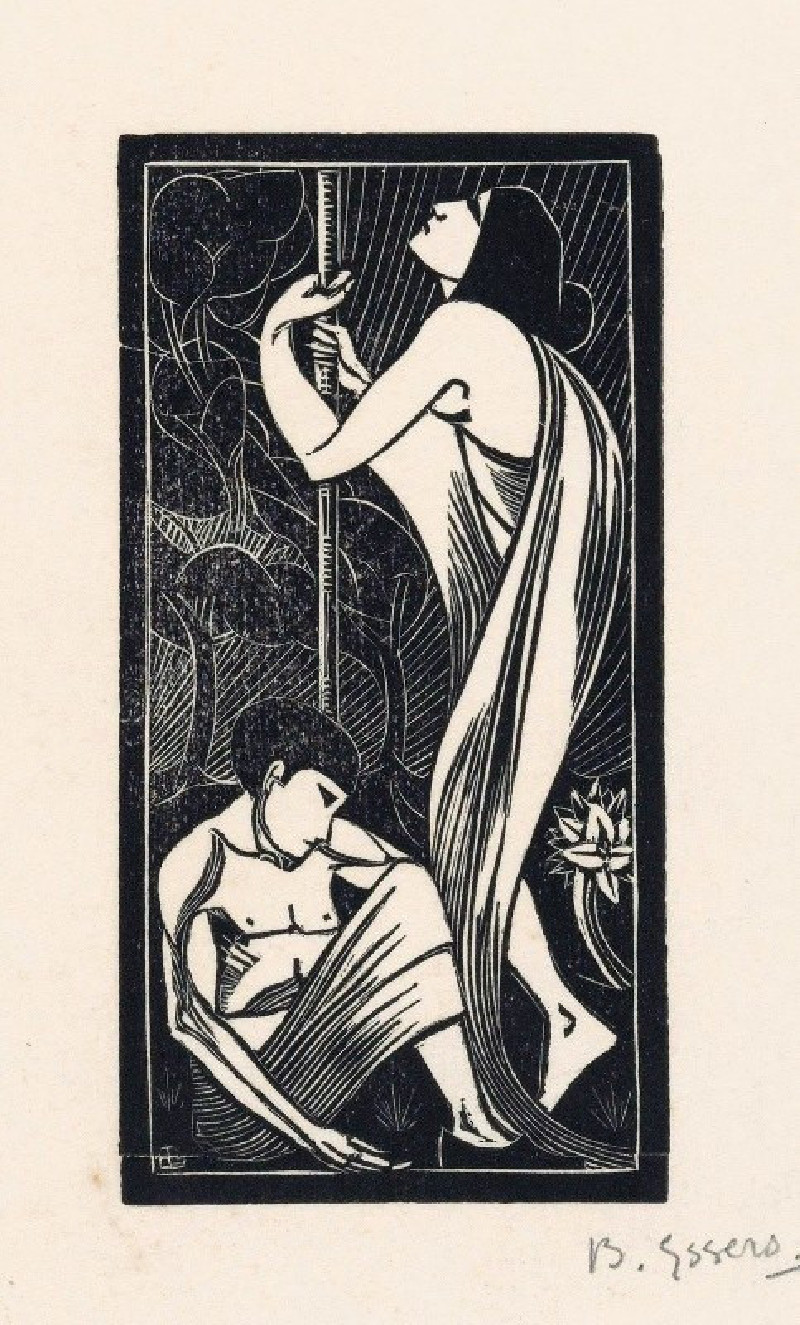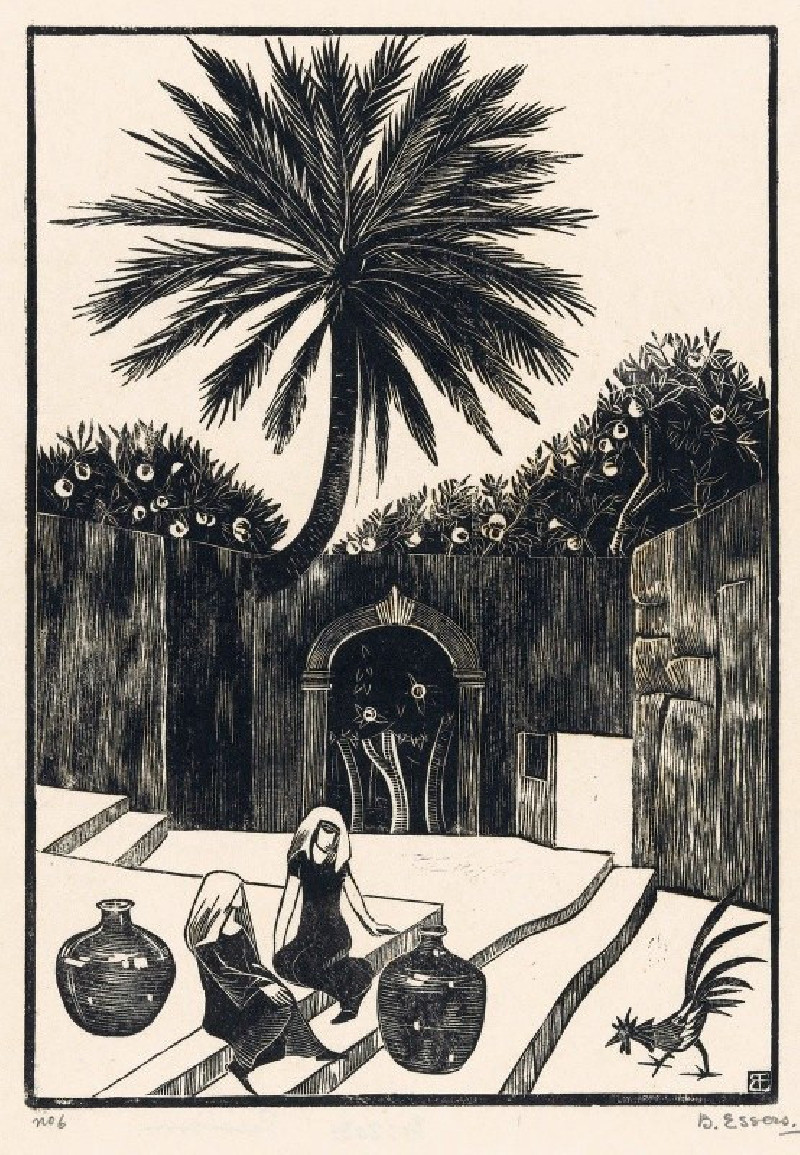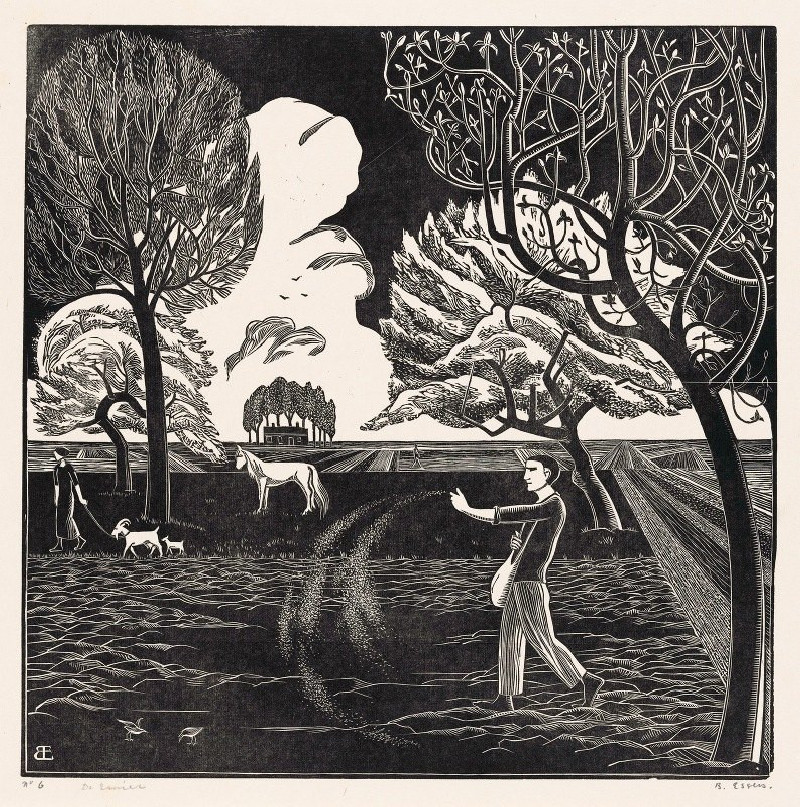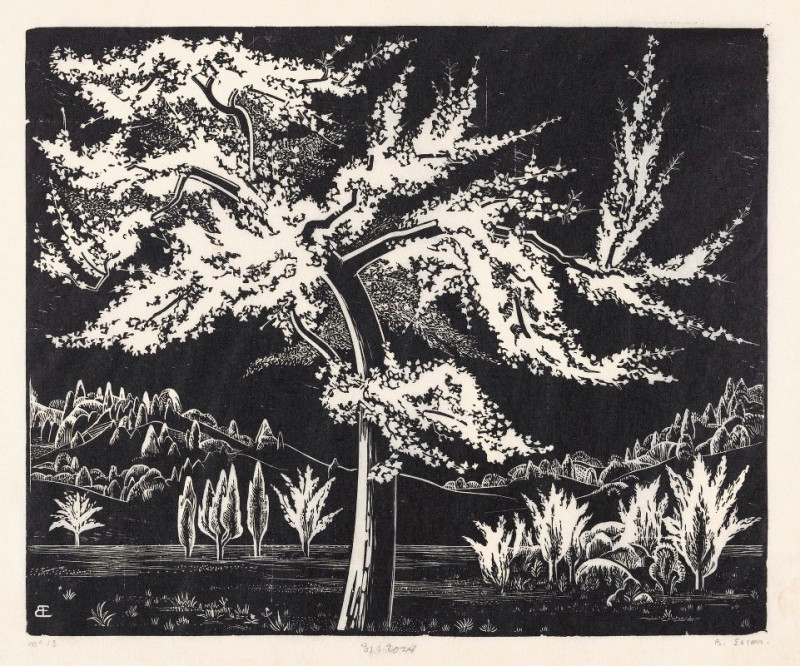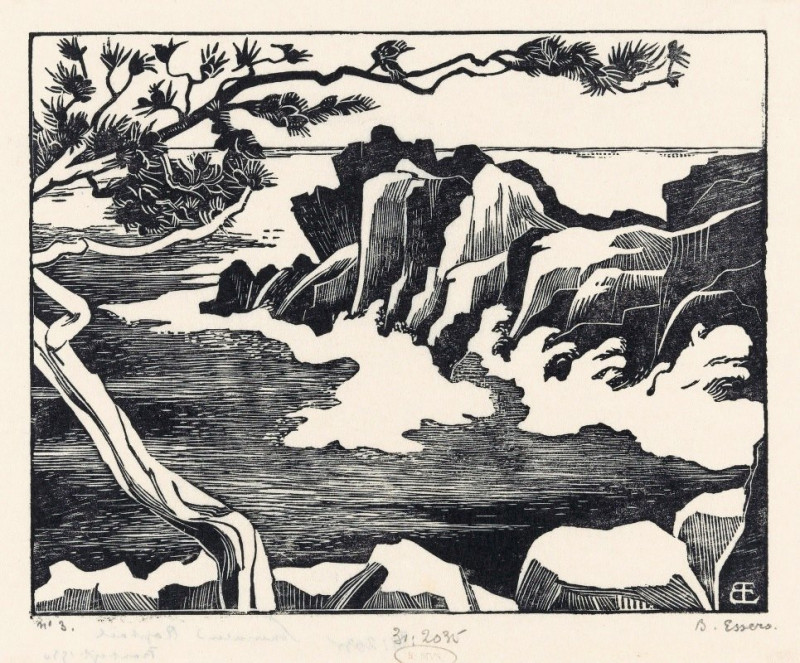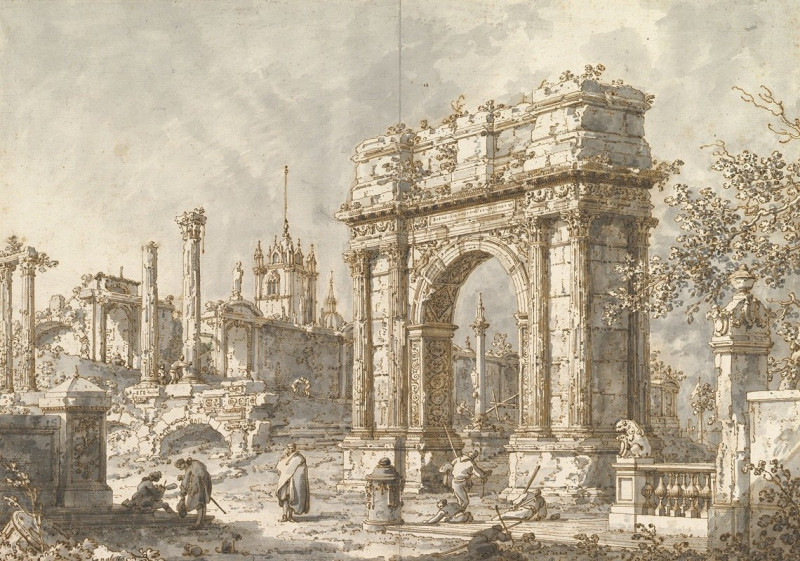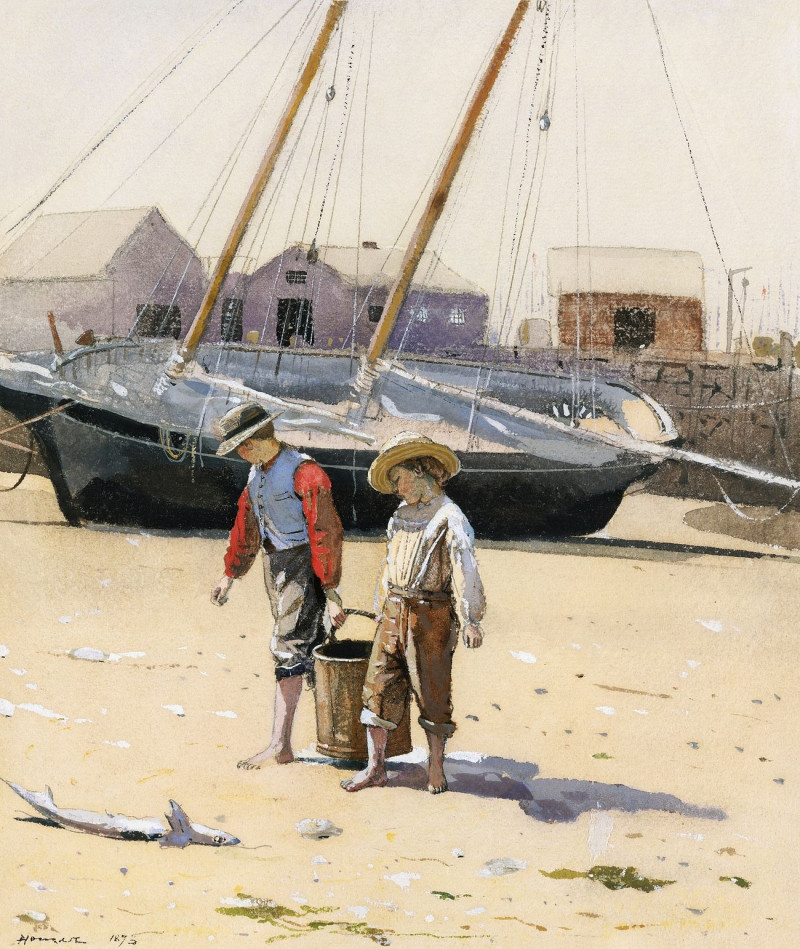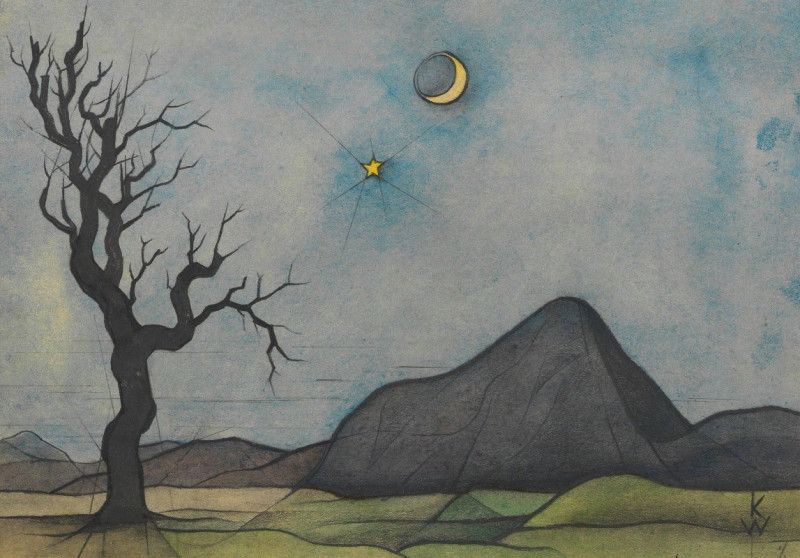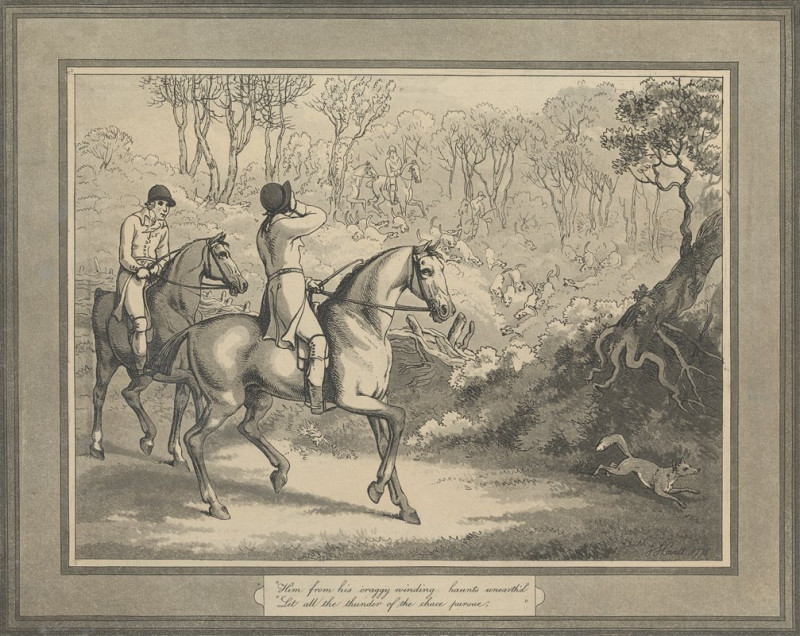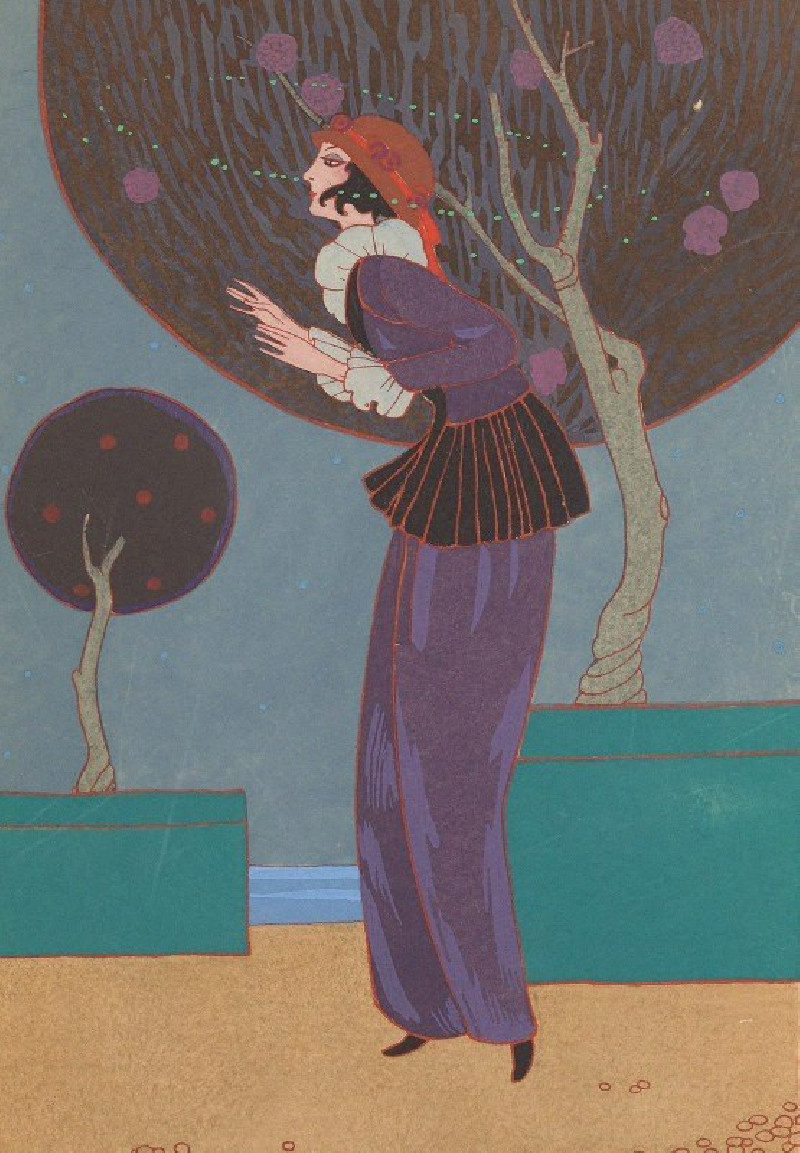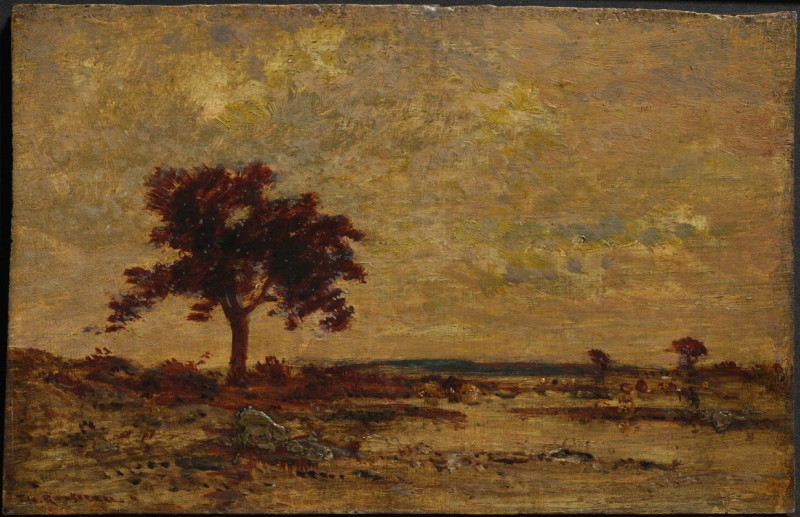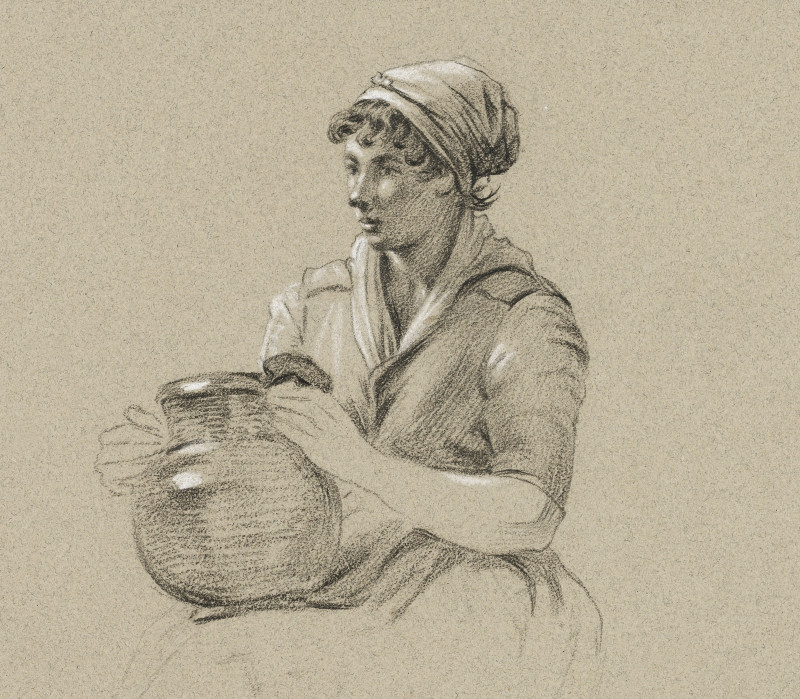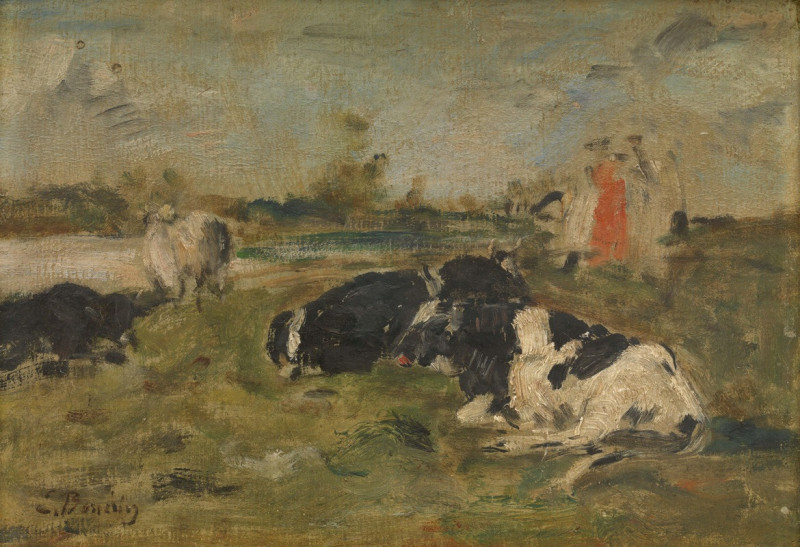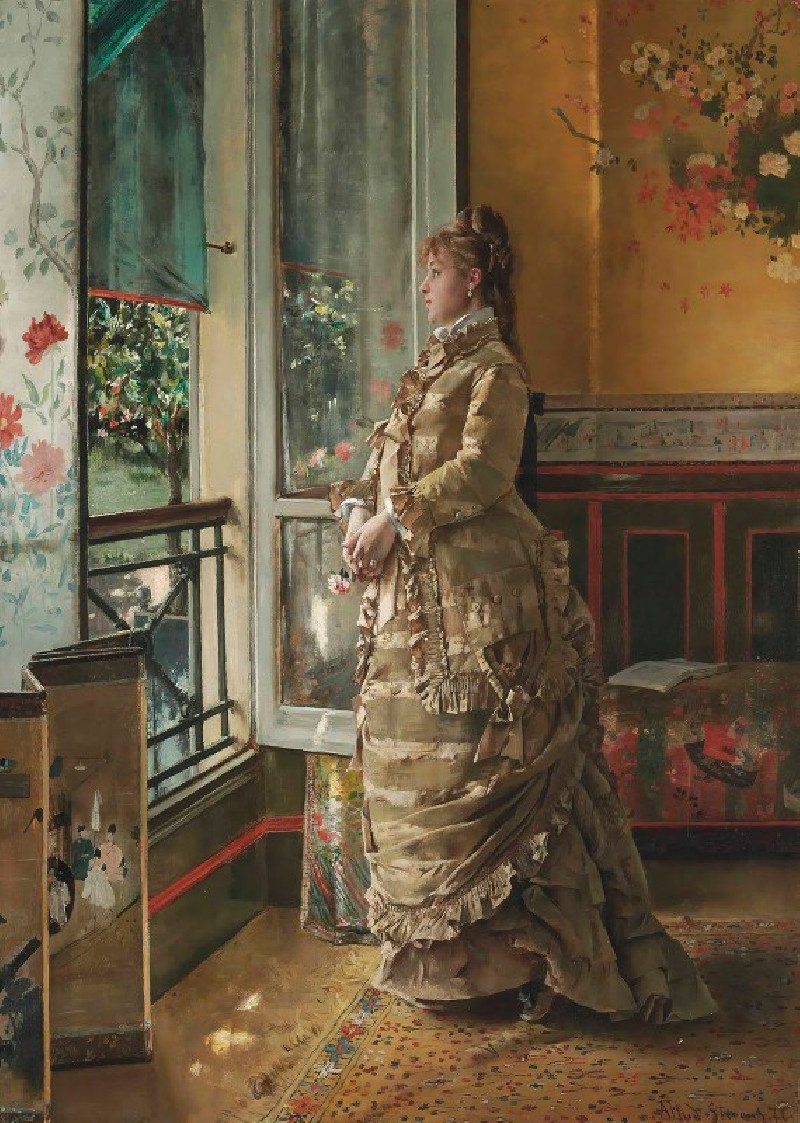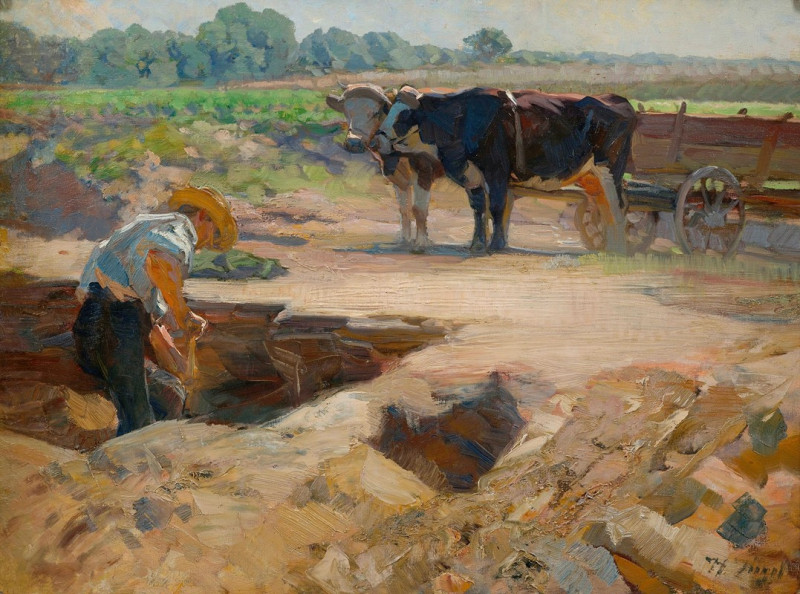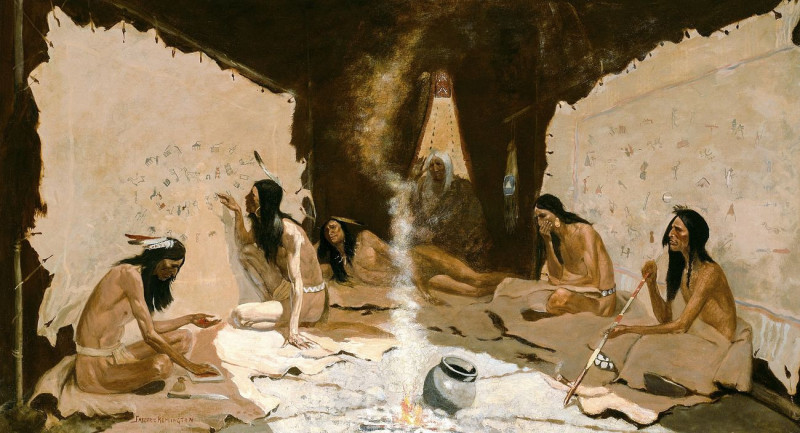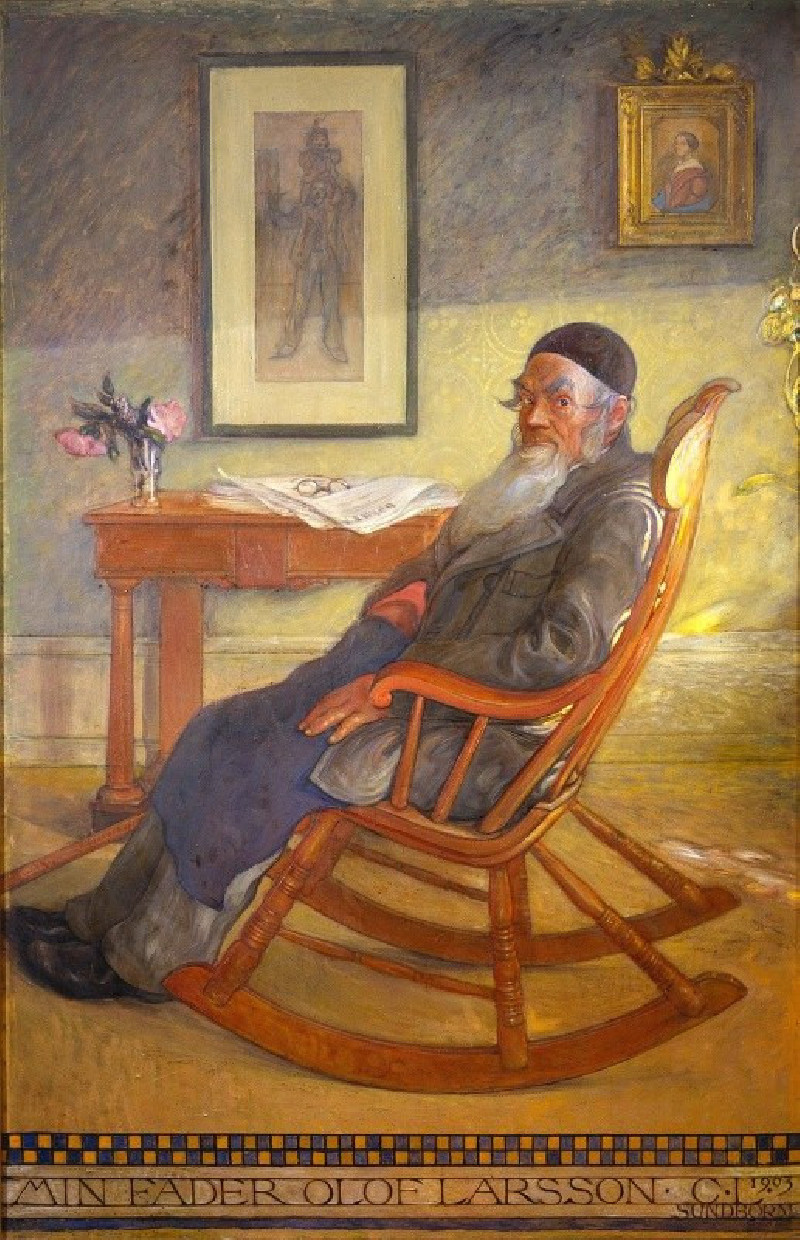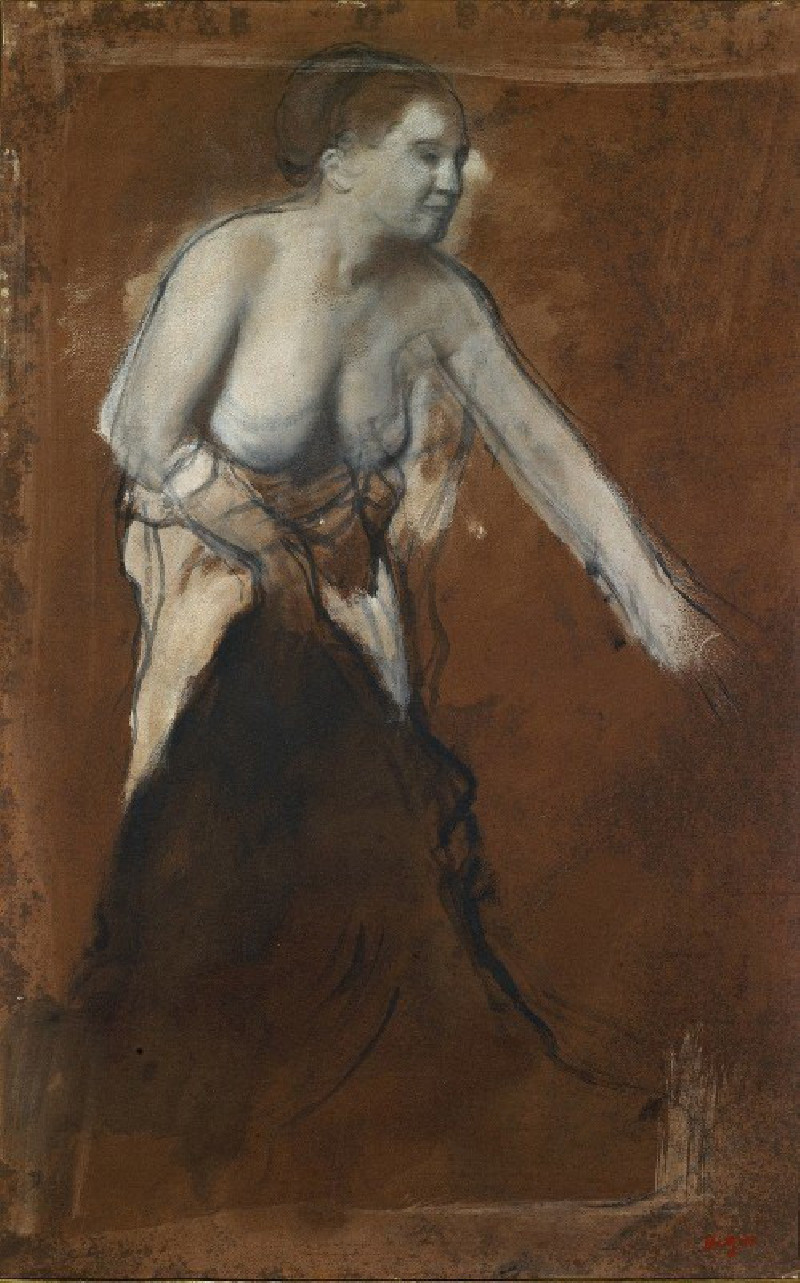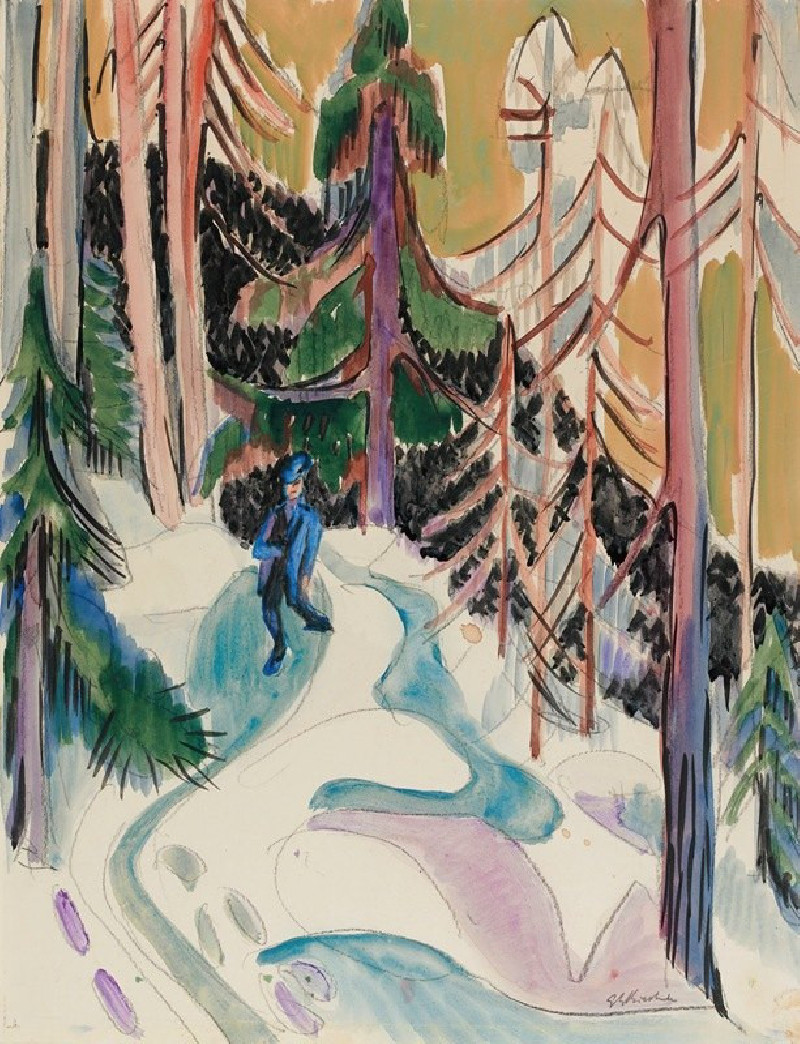Ploegende ossen (1927)
Technique: Giclée quality print
Recommended by our customers
More about this artwork
"Ploegende ossen" (Plowing Oxen), created in 1927 by Dutch artist Bernard Essers, is a striking example of his skill in the medium of linocut. The composition captures a rural scene filled with a sense of motion and the everyday toil of agrarian life. In the foreground, two oxen, rendered with strong, bold lines, pull a plow, guided by a plowman whose posture evokes both determination and strain. Near the center, a man on horseback appears in dialogue with another worker, perhaps discussing the day's tasks.The landscape depicted is both rugged and nurturing, including an expansive tree with a heavily textured canopy that dominates the upper space, seeming to protectively arch over the scene. Beyond, the backdrop is softly curved hills and a neatly outlined farm with buildings that suggest a quiet, orderly presence in the midst of nature's grandeur and the rigors of farm work.Birds, swirling in the sky, add a dynamic element to the scene, suggesting the ongoing passage of time and the interconnectivity of life cycles in rural environments. The overall effect of the artwork is a powerful visual narrative that respects the timeless relationship between humans, animals, and the land they cultivate—a theme that transcends specific periods and localities, resonating universally.
Delivery
Returns
Bernard Essers (11 March 1893 – 13 May 1945) was a Dutch painter. His artistic contributions were showcased in the painting event of the art competition during the 1936 Summer Olympics. Furthermore, Essers' work was featured in the exhibition and sale titled Onze Kunst van Heden (Our Art of Today) held at the Rijksmuseum in Amsterdam in 1939.

